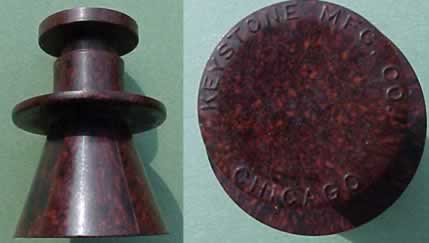[ Links ] [ Rules list ]
The Teeing Ground
Teeing Ground
Order of play
Falling off tee
Playing the Ball
Unplayable
Wrong, Substitute
Lifting, dropping
Moved, deflected
Provisional, Lost, Out of bounds
Putting Green
Flagstick
Marking, lifting
Stymie
Hazards, Penalty Areas
Water hazards
Lateral water hazards
Abnormal Conditions
GUR
Casual water, Temporary water
Hole, cast, or runway
Obstructions,
Loose impediments
Miscellaneous
Rule 1
Advice
Scoring
Stableford
Rule 3-3
Old Course, St Andrews
Wartime local rules
Best ever golf poem
Successive Rules codes have been in general agreement on the dimensions over the years; the teeing ground moving further away from the hole, and getting bigger:
Bruntsfield 1773 extended the area to between two and four club lengths, followed by The Company of Golfers 1775. This proved a very popular distance and was used by almost all the codes of the 19th century until the introduction of a specific teeing ground. (St Andrews 1777 dimensions were between one and four club lengths until they conformed in 1812)
Crail 1786 allowed teeing within three club lengths.
Burntisland 1828, and Burgess 1838: between three and six club lengths.
Thistle Golf Club 1824: between two and six club lengths.
Perth 1825: between six and ten club lengths.
R&A 1851 between four and six club lengths
R&A 1858 and Royal Perth 1864 between six and eight club lengths
R&A 1875 between eight and twelve, and, additionally, "except where special ground has been marked by the Conservator of the Links, which shall be considered the ‘teeing ground,’ and the balls shall be teed within, and not in advance of, such marks". This is the first mention of a teeing ground, and markers.
R &A 1882 the teeing ground was denoted by markers alone, and the maximum depth of two club lengths was introduced.
R &A 1891 The rectangular shape of the teeing ground is stipulated for the first time: a ball must not be teed in front of, nor on either side of, nor more than two club lengths behind the teeing markers.
Starting from outside the teeing ground
R &A 1891 the option to recall the stroke in matchplay was introduced. No penalty was attached to a recalled stroke, and this was specifically mentioned in 1902.
From 1899 playing from outside the area was disqualification in stroke play.
The disqualification in strokeplay was reduced to one stroke in 1908 and the player was obliged to replay from the correct place.
This penalty remained until 1952 when all strokes played counted on the player's score, and then he was to play correctly.
In 1980, the penalty was modified to two strokes, but strokes played with the ball from outside the teeing ground did not count.
Failure to correct the error has always carried a penalty of disqualification.
In 1933 the rules stated that a player may stand outside teeing area to play (but it was not specifically barred previously).
Order of play
In teeing off, the Honour (called the Privilege until 1882) has been decided by lot, or was ‘given to old captains of the club or members’, since R &A 1875. The custom of the previous hole winner gaining the honour first made an appearance in 1828, but was not mentioned by the HCEG or St Andrews until 1875.
Ball falling off the Tee
Introduced following an early decision, in 1902 with wording almost identical to today; additional words 'when not in play' in 1912 following another decision.
1933 Rules added that the stroke counts (it always did, this was presumably for clarification).
No penalty for hitting ball while moving also introduced in 1902, reworded and moved in 1952.
The TeeThe 1908 rules stated that the ball may be placed on the ground or
 |
The tee itself had never been defined until 2004. Now, it is a device designed to raise the ball off the ground and may not be longer than 4 inches (101.6mm).
The wooden tee peg was patented in 1899 by George F. Grant, whose life sounds like an interesting story in itself: a son of former slaves, Harvard graduate, dentist, inventor.
 |
tee design |